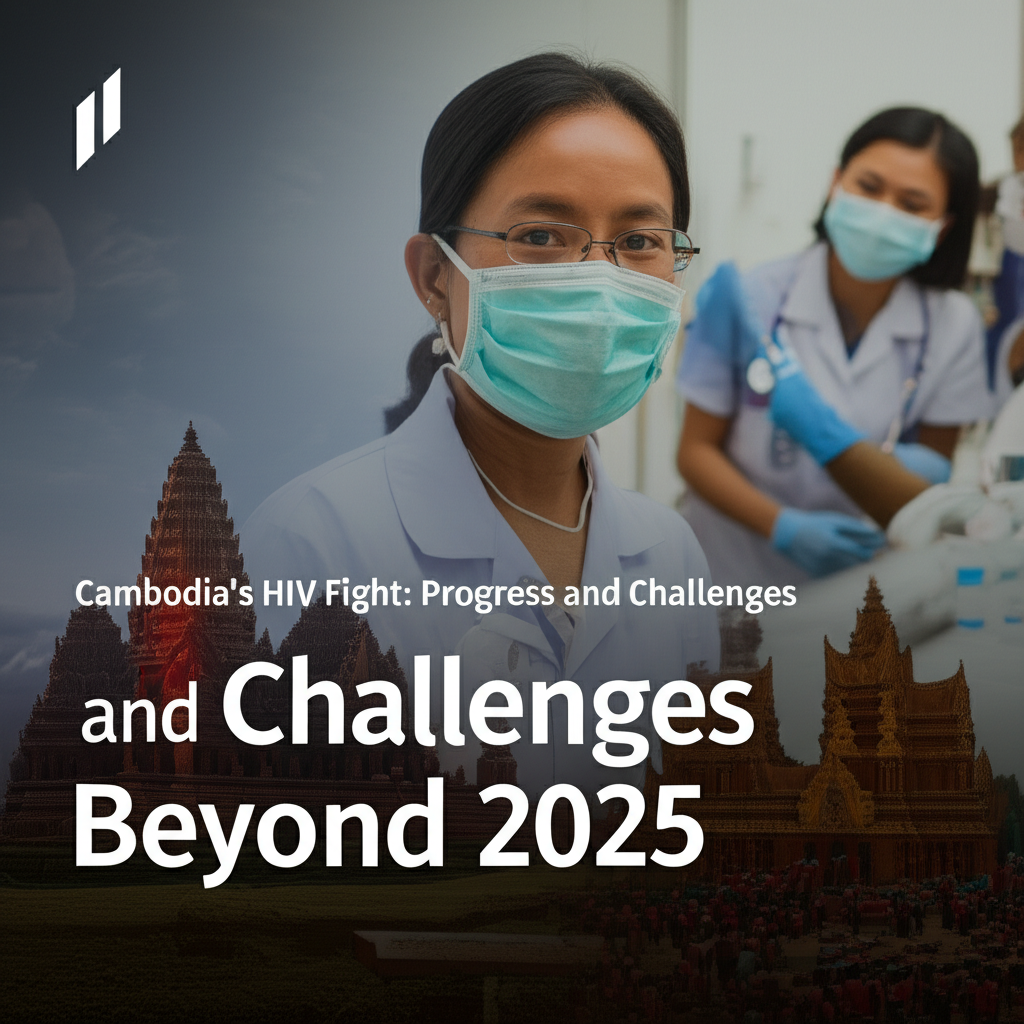Cambodia's HIV Fight: Progress and Challenges Beyond 2025

Cambodia has made remarkable strides in combating the HIV/AIDS epidemic, once facing one of the highest prevalence rates in Asia.
Background
However, despite significant progress, challenges remain as the nation sets its sights on achieving epidemic control by 2025 and sustaining those gains beyond This article delves into the current state of HIV in Cambodia, examining the advancements made, the persisting obstacles, and the future strategies required to ensure a healthier future for all Cambodians The country's success story began with a concerted effort in the late 1990s and early 2000s Aggressive prevention campaigns, coupled with increased access to antiretroviral therapy (ART), played a pivotal role in reducing new infections and AIDS-related deaths International partnerships, including support from organizations like UNAIDS, the Global Fund, and PEPFAR (the U President's Emergency Plan for AIDS Relief), provided crucial financial and technical assistance
These efforts have resulted in a substantial decline in HIV prevalence among adults, from a peak of nearly 2% in the late 1990s to below 0 5% in recent years
While overall prevalence has decreased, certain populations remain disproportionately affected
Key populations, including men who have sex with men (MSM), transgender individuals, sex workers, and people who inject drugs, continue to face higher rates of HIV infection Stigma, discrimination, and limited access to healthcare services contribute to these disparities Targeted interventions and community-based programs are crucial to address the specific needs of these vulnerable groups
Reaching the 2025 targets requires a multi-pronged approach
Firstly, prevention efforts must be intensified and tailored to specific populations.
This includes promoting condom use, expanding access to pre-exposure prophylaxis (PrEP), and implementing comprehensive sexual health education programs Secondly, ensuring universal access to HIV testing and treatment is paramount
This involves scaling up testing services, decentralizing treatment to primary healthcare facilities, and addressing barriers to accessing and adhering to ART Thirdly, addressing stigma and discrimination is essential to create a supportive environment for people living with HIV and to encourage testing and treatment-seeking behavior “Cambodia has demonstrated remarkable commitment to combating HIV/AIDS,” says Dr Sovannary Tuot, a leading HIV researcher at the National Institute of Public Health
“However, we cannot afford to be complacent.
We need to continue investing in innovative prevention strategies, expanding access to treatment, and addressing the underlying social and economic factors that contribute to HIV transmission ” Looking beyond 2025, sustaining the gains made requires long-term commitment and strategic planning This includes strengthening the national healthcare system, ensuring sustainable financing for HIV programs, and building local capacity to manage and respond to the epidemic Furthermore, addressing emerging challenges, such as drug resistance and co-infections like tuberculosis, is crucial to prevent setbacks The COVID-19 pandemic has presented additional challenges, disrupting HIV services and diverting resources
It is essential to mitigate the impact of the pandemic on HIV programs and to ensure that people living with HIV continue to receive the care and support they need Integrating HIV services into broader healthcare systems can enhance efficiency and sustainability
Furthermore, addressing the social determinants of health is critical
Poverty, lack of education, and gender inequality all contribute to vulnerability to HIV infection. Addressing these underlying issues can have a broader impact on public health and well-being.
In conclusion, Cambodia's journey in combating HIV/AIDS is a testament to the power of political commitment, evidence-based interventions, and community engagement While significant progress has been made, challenges remain By intensifying prevention efforts, ensuring universal access to treatment, addressing stigma and discrimination, and strengthening healthcare systems, Cambodia can achieve epidemic control by 2025 and sustain those gains for generations to come The future depends on continued vigilance, innovation, and a steadfast commitment to leaving no one behind in the fight against HIV/AIDS
